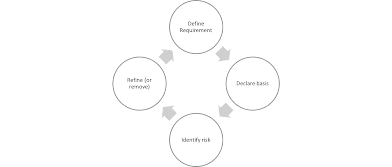Gassumptions

Beginning a new Government project there was much to learn - our experienced team members were free thinking solutions for creativity and confirmation. All our approaches and ideas appeared valid - various guesses, estimates, assumptions that were well reasoned. Armed with recent academic insight I asked some of the team how their ideas had reached their conclusion and on what basis. Moreover, I had the audacity to suggest that some of our logic, may be flawed more than others - on the basis that one form of logic had more consequence . Everyone in our team is capable and knowledgeable, easily able to define the terms guess, assumption, and facts… but I argued we, myself included, don't always declare the basis for our reasoning. Why, perhaps, is obvious - we can't always easily explain how we synthesized what we learn and the way we learn differs. We don't always see the cues for our behaviour when we make assumptions and the like. It's habitual, of course. We form

